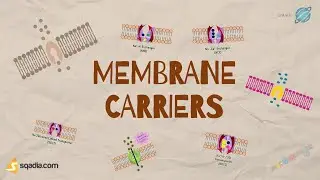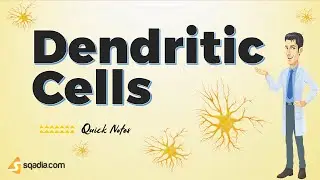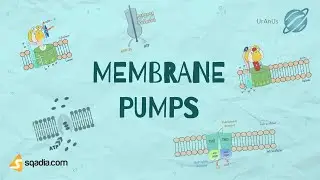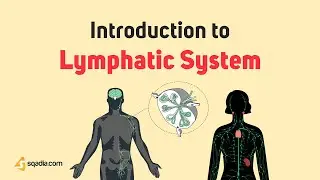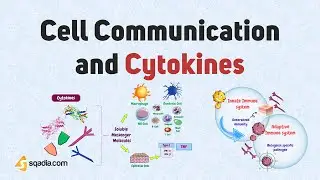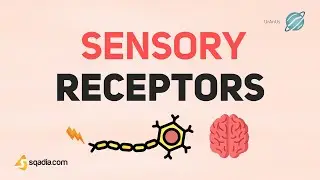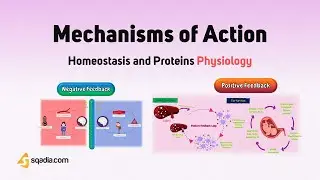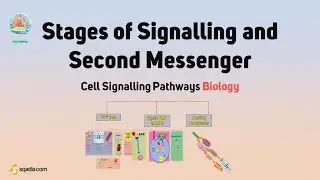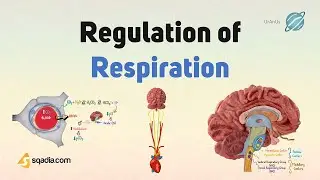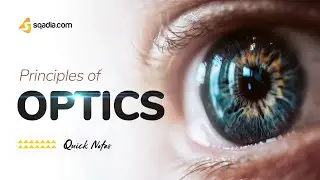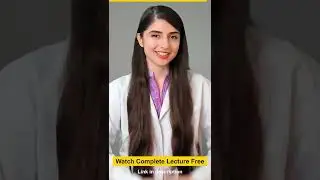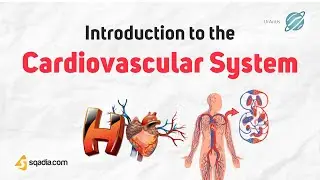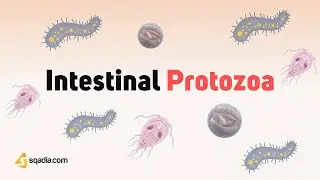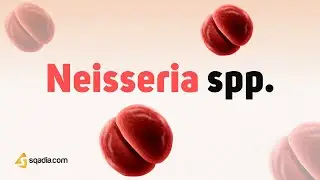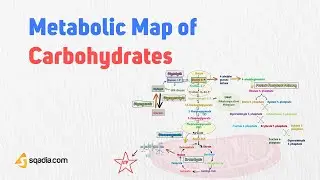Introduction to the Cardiovascular System Physiology | Overview
sqadia.com allows you to boost your knowledge about the Cardiovascular system. Here in this video, you will learn about an Introduction to the Cardiovascular system and the Anatomy and Physiology of the Cardiovascular system, where you will get an in-depth understanding of the components of the Cardiovascular system, which are: Blood, Heart, and Blood vessels, and lastly about blood circulation.
▬ 🕘 Timestamps
00:00 - Introduction to the Cardiovascular System Physiology
01:12 - Role and Functions of Cardiovascular System
04:11 - Link to video lectures on sqadia.com
▬ 📃 Cardiovascular System
The cardiovascular system is also known as the Circulatory system. It is basically an organ system of the body that is composed of Heart and Blood vessels, and it is mainly responsible for the transport of Oxygen and nutrients towards tissues of the body, and removal of wastes and Carbon dioxide from cells and organs, so that it can be disposed off by excretory organs of the body.
It mainly plays a role in:
🟡 Transportation
🟡 Control system
🟡 Temperature regulation
🟡 Reproduction
▬ 📜 Components of the Cardiovascular System
The cardiovascular system is mainly comprised of 3 main components:
🔵 Blood
🔵 Heart
🔵 Blood vessels
▬ 📃 Cardiovascular System: Blood
Blood is the vital fluid of our body, it is a connective tissue in fluid form. That is mainly composed of:
👉 Formed elements:
These are the cell components of the blood, that includes.
🟠 Erythrocytes
🟠 Leukocytes
🟠 Thrombocytes
Plasma: The fluid portion of the blood other than its cellular components is called Plasma. It is a mixture of:
Water, Nutrients, Wastes, Gases and Plasma proteins
▬ 📜 Cardiovascular System: Heart
Heart is the only organ of the cardiovascular system. It is a dual pumping organ, that pumps blood into the pulmonary and systemic circulation.
It has 4 chambers and four valves.
How deoxygenated blood enters the blood and then oxygenated blood leaves heart, and transported to the body, is all well explained in this section.
▬ 📃 Cardiovascular System: Blood Vessels
Blood vessels are the vascular tubes that carry deoxygenated blood to the heart and oxygenated blood to the body.
This blood vasculature of the body can be classified into:
👉 Arterial system
Composed of Aorta, arteries and arterioles.
They carry oxygenated blood away from the heart, towards the body.
👉 Capillaries
Smallest vessels, that exchange oxygen and nutrients to the tissues, at the cellular level.
👉 Venous system
Composed of Superior and inferior vena cava, Veins, and venules.
They carry deoxygenated blood from the body, toward the heart.
This section will help in understanding in-depth concepts about blood vessels.
▬ 📜 Cardiovascular System: Blood Circulation
The main function of CVS is Blood circulation.
This circulation of blood can be divided into:
👉 Pulmonary circulation
Circulation of deoxygenated blood from the right ventricle to the lungs, where it gets oxygenated and enters the left atrium of the heart.
👉 Systemic circulation
Circulation of oxygenated blood from the Left ventricle of the heart to the rest of the body and then deoxygenated blood from the body towards the right atrium of the heart.
▬ 🎬 5500+ sqadia.com Medical Videos ▬▬▬▬▬▬▬▬▬▬
👩🏻⚕️ Accessible Medical Student Education 24/7/365
💡 Simplifying Medical Learning
💪 Study Hard, Dream Big, Achieve More
#physiology #physiologylectures #medicalphysiology #physiologyvideos
#medicalstudent #medicaleducation #medicallectures #medicalstudy #medicalstudents #medicalanimation
Watch video Introduction to the Cardiovascular System Physiology | Overview online, duration hours minute second in high quality that is uploaded to the channel sqadia.com 14 July 2022. Share the link to the video on social media so that your subscribers and friends will also watch this video. This video clip has been viewed 1,651 times and liked it 37 visitors.








